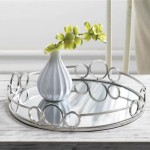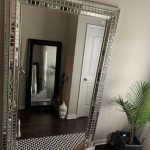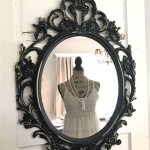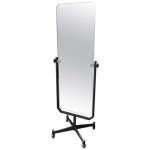Is a Two-Way Mirror Bad? Exploring the Ethical and Practical Implications
Two-way mirrors, also known as one-way mirrors or observation mirrors, are fascinating optical devices that allow viewing from one side while appearing reflective on the other. This unique property makes them valuable in various settings, from security and research to entertainment and architecture. However, their use often raises ethical concerns, particularly regarding privacy and consent. This article aims to explore the multifaceted implications of two-way mirrors, examining their benefits and drawbacks to determine whether their presence is inherently “bad.”
Understanding Two-Way Mirror Functionality
A two-way mirror’s effectiveness relies on balanced lighting conditions. The observing side must be significantly darker than the mirrored side. This difference in light levels allows viewers on the darker side to see through the partial reflection while individuals on the brighter side see primarily their reflection. The mirror itself is coated with a thin layer of metallic material, allowing some light to pass through while reflecting the rest. The degree of reflectivity versus transparency is carefully calibrated to achieve the desired effect.
Applications of Two-Way Mirrors
Two-way mirrors find application in diverse fields, showcasing their versatility. Some common uses include:
- Law Enforcement: Observation rooms in police stations and prisons allow for monitoring suspects and inmates without their awareness.
- Market Research: Focus groups and usability studies utilize two-way mirrors to observe consumer behavior without direct interaction.
- Entertainment: Stage illusions, magic tricks, and haunted house attractions often incorporate two-way mirrors for dramatic effect.
- Security: Hidden surveillance cameras can be placed behind two-way mirrors, providing discreet security monitoring.
- Scientific Research: Behavioral studies, particularly in psychology and animal science, may utilize two-way mirrors for observation.
- Architectural Design: Two-way mirrors can create unique spatial effects and enhance natural light in buildings.
Ethical Considerations: The Privacy Dilemma
The core ethical concern surrounding two-way mirrors is the potential for privacy violation. When individuals are unaware of being observed, their right to privacy is compromised. This is particularly problematic in sensitive environments like restrooms, changing rooms, and private residences. The use of two-way mirrors in such contexts can create a sense of vulnerability and distrust, potentially leading to psychological distress.
Legal Ramifications and Regulations
The legality of using two-way mirrors varies depending on jurisdiction and specific application. In some cases, explicit consent is required before individuals can be observed through a two-way mirror. Other jurisdictions may have regulations regarding signage or notification of surveillance. It is crucial to understand the applicable laws and regulations before installing or utilizing a two-way mirror, particularly in contexts involving sensitive personal information.
Detecting a Two-Way Mirror
Several methods exist for detecting a potential two-way mirror. One simple technique is the fingernail test. By placing your fingernail against the reflective surface, a small gap should appear between your nail and its reflection in a regular mirror. However, with a two-way mirror, the reflection will appear almost flush with the fingernail due to the thin layer of glass separating the reflective surface from the observation side. Other methods include observing differences in lighting, looking for inconsistencies in the reflection, and using a flashlight to illuminate the space behind the mirror.
Alternatives to Two-Way Mirrors
Depending on the intended application, several alternatives to two-way mirrors exist. These include:
- Standard Surveillance Cameras: Offer a more overt and often legally compliant method of observation.
- Smart Glass Technology: Allows for dynamic switching between transparent and opaque states, providing controlled privacy.
- One-Way Film: Can be applied to existing glass surfaces to create a similar effect to a two-way mirror, but often with a less perfect reflection.
Balancing Benefits and Risks
The use of two-way mirrors requires careful consideration of the ethical and legal implications. While they offer valuable functionalities in various fields, their potential for privacy violation necessitates responsible implementation. Transparency and informed consent are crucial in mitigating the risks associated with their use. Ensuring adherence to legal regulations and utilizing alternative technologies when appropriate can help strike a balance between the benefits and potential drawbacks of two-way mirrors.

How To Tell If A Mirror Is Two Way Or Not 8 Steps With Pictures
How You Do A Quick Check For Cams Or Two Way Mirrors In Trial Rooms Quora

Buyer S Guide Selecting The Best Mirror For Your Observation Room Two Way Mirrors

Beware If There S No Space Leave The Place It A Two Way Mirror Should Be Between Your Fingers Security Tips Martial Arts

How To Tell If A Mirror Is Two Way Or Not 8 Steps With Pictures

How To Tell If A Mirror Is Two Way Or Not 8 Steps With Pictures

How To Tell If A Mirror Is Two Way Or Not 8 Steps With Pictures

How To Tell If A Mirror Is Two Way Or Not 8 Steps With Pictures

How To Tell If A Mirror Is Two Way Or Not 8 Steps With Pictures

How To Spot A Two Way Mirror Snopes Com








